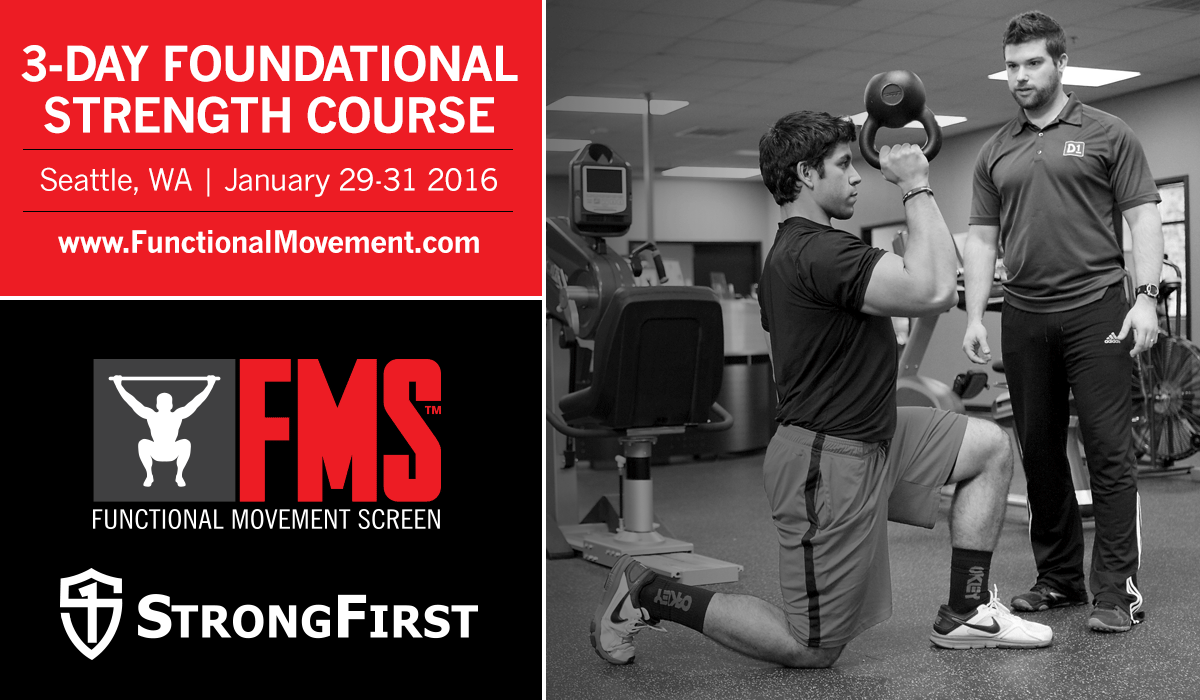Half Kneeling for the Hip and Ankle
Posted by Gray Cook
Coaching versus correcting can be confusing if we don’t look at it in a proper way. Good coaches can take a bad lift or a bad movement and improve that with just a few well placed words. Get started with Coaching Versus Correcting Part 1: Good Coaching, Good Correctives.
We often see people in our workshops sampling a corrective they don’t need, only to look up at the instructor and say, ‘I really don’t feel much from this.’ Why should they? They don’t have anything that needs correction. They’re reading far beyond a third-grade level. If I hand them a third-grader’s book, they may not get much from that, but the person who needs it is going to notice a tangible benefit.
How? We’re going to go through the extra inconvenience to set a baseline beforehand with a simple move, a simple breakout, a simple corrective or even doing the screen. Then we’re going to revisit that to confirm the fact that the investment was worthy.
From there we go right back into coaching. If you’ve got ‘2s’ and ‘3s’ throughout your movement screen, there’s a good chance the biggest barrier to you doing a respectable lift is just technical precision, whether it be bodyweight, straight bar or kettlebell.
When the movement screen gives you at least a ‘2’ or ‘3’ on everything, you’re demonstrating the requisite mobility and motor control. You just need to learn to control your breath, own your alignment and have a good feel perspective of what that lift is supposed to do.
This is when the coaching cues change everything. I became a better presser the moment Pavel said, ‘Pull the weight down out of the air with as much energy as you used to press it up into the air.’ That helped me reset my scapula. I was standing there thinking, ‘Why didn’t I think of this?’

It was because Pavel has spent a lot of time coaching pressing. The cue worked for me because I was at least ‘2s’ on my shoulder mobility at that time, maybe not now or maybe it’s better. Who knows?
The point is this: Had I been a ‘1’ on my shoulder mobility, I wouldn’t have received the benefit of that coaching cue with nearly the impression I did. A ‘1’ is a simple template that says we should probably correct this. In most cases, if the person is fit and otherwise ready to train, they should be able to go from a ‘1’ to a ‘2’ in the preparatory phase of a strength session.
When that ‘2’ is in play (a lot of the things we’ve done in the past tell us that ‘2’ is going to be available for about 30 minutes) that is the window of opportunity where most good strength-and-conditioning effect can occur in a single-dose workout. That means even though someone walked in with a ‘1,’ we’re going to be training with a ‘2.’ Now, if we overload them or let them have poor technique, we might insult the move and send them back to a ‘1.’
Let’s be honest here. What is a ‘1’ on the movement screen? In many cases, we might want to call it a mobility or flexibility problem, but flexibility problems don’t respond to stretching like we think because many times that ‘1’ on the movement screen isn’t just a tight muscle. It’s a strategically placed parking brake with agreement from the brain and the body suggesting ‘If we allowed any more motion, this idiot would probably injure us. We’re not going to allow this person’s drive to train or be fit actually sideline us and injure us in the process.’

When we see a limited leg raise, limited shoulder mobility, an inability to lunge on one side or a horrendous squat, instead of just thinking, ‘Let’s find that tight muscle and attack it with foam rolling,’ let’s figure out why the parking brake is on in the first place.
Sometimes, the biggest problem with flexibility is that the person performs a few powerful moves—loading moves, sprinting moves or lifting moves—without enough motor control or integrity. They scared their body so bad or leaned against the edge of their ability that they imposed a parking brake, and that parking brake has been engaged since they’ve been training. Sometimes, the biggest performance gain comes from correcting the ‘1s’ and then re-coaching the ‘2s.’
This is a very important thing to consider going into the Foundational Strength event Brett is teaching. We’re going to breeze through the movement screen, but then show how everything is in play if you know when to coach and when to correct.
The Functional Movement Screen as a coaching asset does that for us. Don’t waste your valuable coaching cues on a ‘1.’ In many cases, you’re only 10 to 15 minutes away from a ‘2’ anyway. By using video or still photography, we can get quick feedback on how clean movement gets.
Save your coaching cues so you and the person you’re coaching can get immediate and tangible benefits from them.
If you’re standing there taking the coaching cues you’ve learned from the masters and putting them on somebody who has their parking brake on, or who has closed down learning pathways because of a few ‘1s’ on the movement screen, you’re not going to bring much honor to the wisdom of those coaching words.
Drop coaching cues where they belong and you’ll get the same benefit as the masters.
Know when to coach. Know when to correct. Come see us in January.

Posted by Gray Cook
Posted by Byron Rohrig